Independent watchmaking duo Gaël Petermann and Florian Bédat are the team behind Petermann Bédat, a small brand based in Renens just outside of Lausanne in Switzerland. They started their brand in 2017, and in 2020 launched their Reference 1967 Deadbeat Seconds, which went on to win the GPHG Horological Revelation Prize the same year.
This watch was one which had always caught my eye but given there were so few made (only 45 in total) I never really thought I would get to see one in person.
Luckily for me, both Gaël and Florian came over to London last year and I was able to meet up with them for a chat – you can check out my interview with them both here.
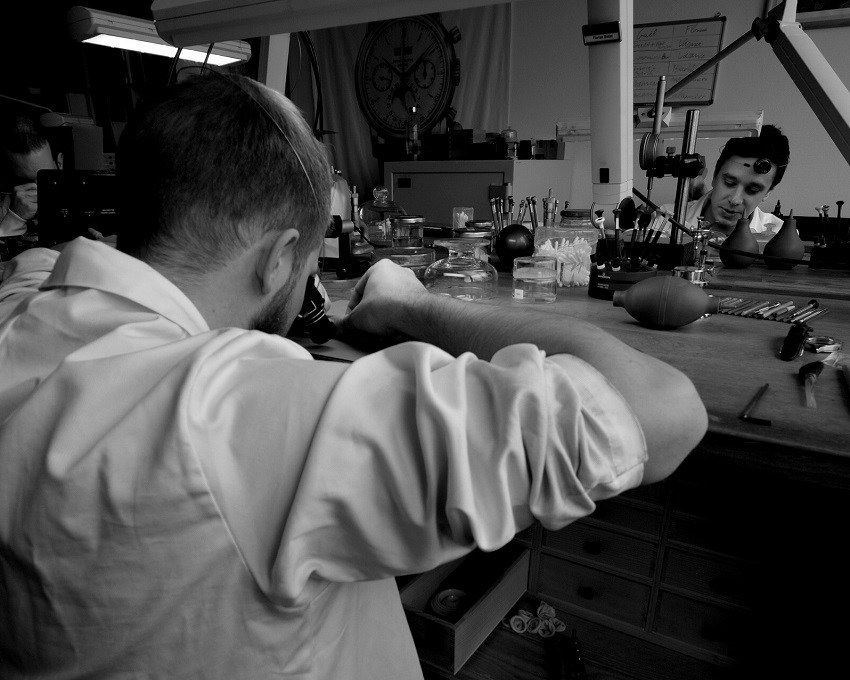
Florian Bédat (L) and Gaël Petermann (R) – photo, Petermann Bédat
They mentioned when we spoke that they were planning to release a new watch in 2023 with a different complication, and so when they started teasing their new watch earlier this year, I was excited to see what it would be. The 1967 Deadbeat Seconds is a fantastic watch, and I was keen to see what the pair would follow this up with.
Suffice it to say I was not disappointed! This is easily one of my favourite releases of 2023 so far. Reference 2941 is a magnificent looking monopusher rattrapante, or split seconds, chronograph with a jumping minute counter which is itself a rarity that is not often seen.
Petermann Bédat Reference 2941
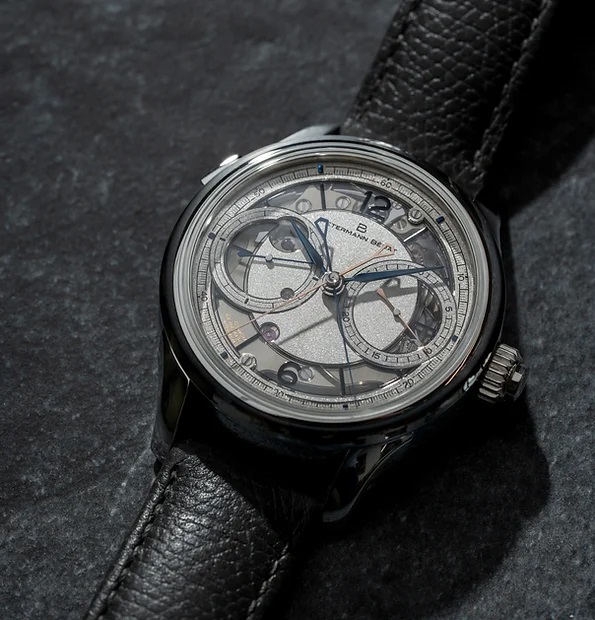
Reference 2941 – photo, Petermann Bédat
To begin with, I should first make it clear that whilst I have been able to try the 1967 Deadbeat Seconds before, I haven’t been able to see the Reference 2941 in person, or try it on, at the time of writing. If that ever changes, I’ll give this article an update accordingly!
Given when I spoke to Gaël and Florian last year they told me the story of how the design for the reference 1967 evolved, I was especially curious to see how well aligned to the overall signature style of the 1967 that the new watch would be.
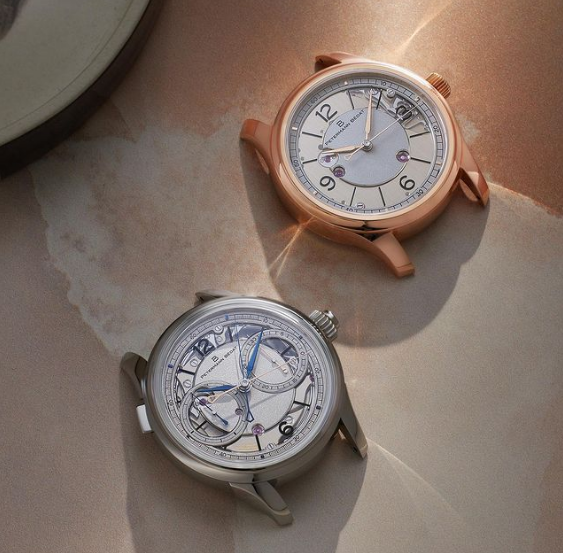
Reference 2941 (L) and 1967 (R) – photo, Petermann Bédat
They have managed to carry this design language flawlessly across to reference 2941, which incorporates a contemporary looking semi-open dial, exposing some of the inner-workings of the calibre 202 on the dial-side (most notably the split-seconds mechanism which is more commonly on the reverse side), with a real focus on showcasing the movement and its exception finishing on the reverse, where they have also carried across their unique arrowhead design which is applied to some of the levers within the movement.
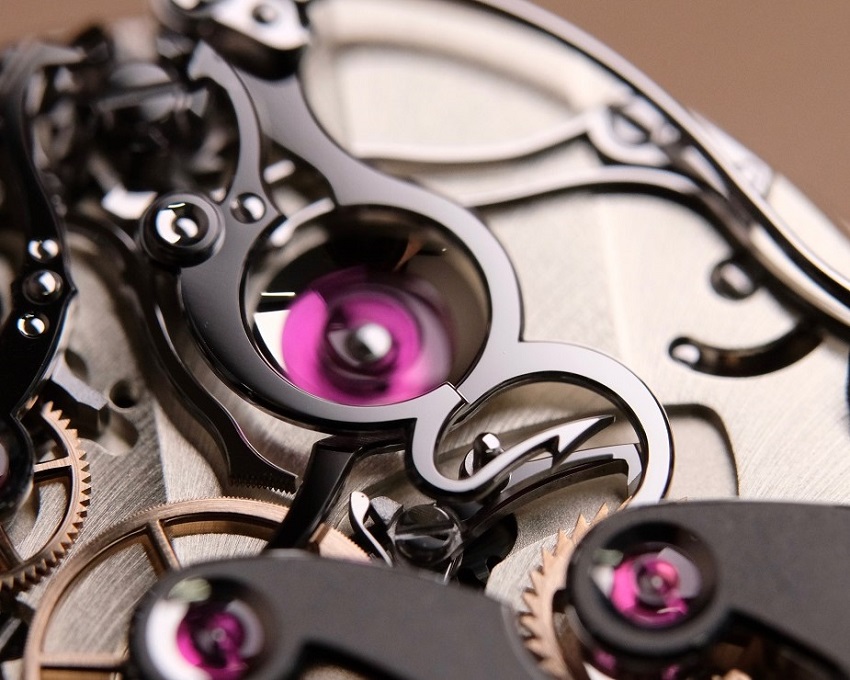
Arrowhead finish in Calibre 202 – photo, Petermann Bédat
With the dial, the platinum plates have a frosted finish applied, with a bicompax sub-dial layout and chapter ring around the periphery of the dial with minute markers; the sub-dial at 3 o’clock is the jumping minute counter of the chronograph, with the continuous running seconds at 9 o’clock.
The main chronograph hand and the chronograph jumping minute hand are executed in gold, with the hours, minutes and running seconds hands executed in blue, along with the split-second hand which sits under the chronograph hand, hidden from view unless the rattrapante mechanism is engaged.
Calibre 202 marks a new manual-wind movement from Petermann Bédat, taking a point of reference for their design from traditional pocket watches, building on the oft-used horizontal clutch mechanism to instigate the chronograph function by adding not only a split-seconds module to this, but also with the added complexity of a jumping minutes counter.
Given the watch operates at a slower frequency rate of 18,000 vibrations per hour (2.5Hz) as opposed to 28,800 vibrations per hour (or 4Hz) the oversize balance wheel makes sense, and I can imagine this would become quite a cool spectacle to see in action.
Adding the split-second module to the dial side of the movement has been a bit of a talking point as this goes against convention, but ultimately this placement was inspired by a vintage pocket watch gifted to Gaël by his wife. I also personally quite like that they have knowingly gone against what convention suggests should be done.
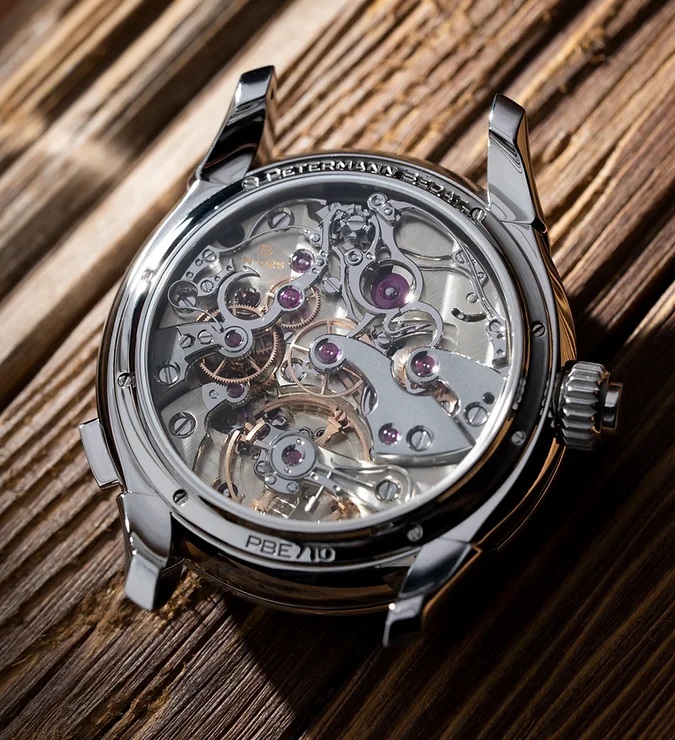
Calibre 202 – photo, Petermann Bédat
Aesthetically it looks objectively stunning – you can immediately tell that this movement was designed from the ground up by the duo with this very much at the forefront of their minds, and the superlative quality of the finishing speaks for itself. Indeed it takes over 900 hours of finishing to get each of the 339 components to the exacting levels required.
Equally I think if you’re using the chronograph and rattrapante functions, you would naturally be looking at the dial anyway, and I quite like that in doing this you can still enjoy the mechanism at work, even if it’s a little more obfuscated behind the 12 than it would be if the module was on the traditional side.
Ultimately, I find it incredibly difficult to look at this movement and think “it could be better if…” – it looks utterly magnificent to me, and I can only hope one day to be able to have the opportunity to view it under a loupe!
That watch comes presented in a modern looking platinum case that is 38.6mm in diameter and 13.7mm thick. The choice to make this watch a monopusher was one again of aesthetics, with a desire to not make the watch look too busy with pushers both above and below the crown. The start, stop and reset functions of the chronograph are all operated via the pusher within the crown, where the rattrapante function is activated and deactivated by using the rectangular shaped pusher positioned at 10 o’clock, starting or stopping the blue split-seconds hand.
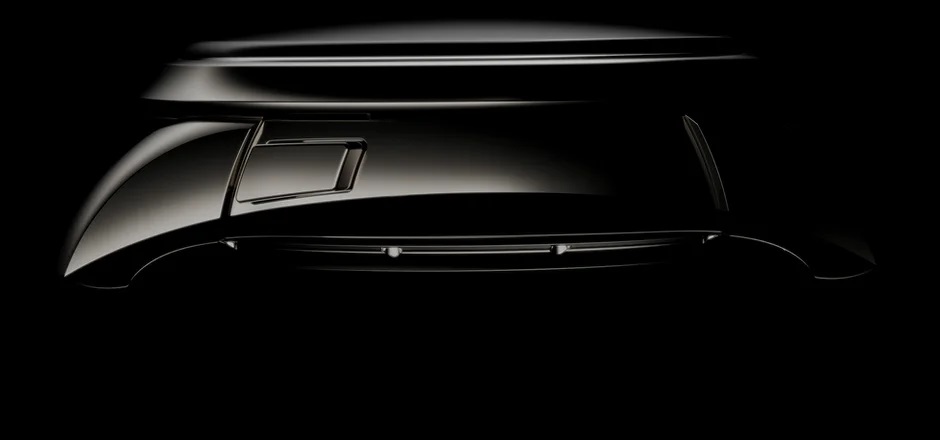
Case profile of Reference 2941 – photo, Petermann Bédat
Finally, I can’t help but wonder where Gaël and Florian have gotten the reference name “2941” from. With the 1967 Deadbeat Seconds, they chose “1967” because it was the year of the first quartz movement watch, a cheeky nod to their mechanical deadbeat seconds complication which “ticks” rather than sweeps, just like a quartz watch.
I haven’t managed to work out quite what “2941” references yet. The first main example of a jumping minute counter chronograph was by Longines, the 13.33Z in 1913. I’ve looked for other possibly-related watch references, movement references and anything else I can think of but nothing yet. Maybe you’ll have better luck…
…and as added incentive, Gaël tells me there might be a bottle of whisky in it for the first person who correctly guesses it, too!
In Summary
I truly believe that the watchmakers behind Petermann Bédat are ones to watch for the future. During the short 6 years that they’ve been working together, Gaël Petermann and Florian Bédat have produced the GPHG Prize winning 1967 Deadbeat Seconds, and now this spectacular monopusher rattrapante chronograph with jumping minute counter in Reference 2941.
This certainly represents a step up for the brand as well, with a price tag of CHF 243,000 plus taxes and it’s also limited to just 10 pieces – but I think that is very much secondary here; Petermann Bédat Reference 2941 is more a statement from two incredibly talented young watchmakers, and hopefully a barometer of things to come in an exciting future.
I can only hope that I will be fortunate enough to encounter one of these one day and be able to enjoy it in person as I’m certain it would not disappoint!
For more information visit either the official partners of Petermann Bédat at A Collected Man, or Petermann-Bedat.ch
If you have any questions, please get in touch via our Contact page, or via our Instagram.
You might also be interested in:
- In Conversation with Gaël Petermann and Florian Bédat
- Watch Finishing Techniques
- “It’s complicated”: an introduction to the Chronograph
- Watch Stationery and Gift Ideas
- Watch Books, Watch Boxes and more at the Watch Affinity Shop on Amazon (commissions earned)
As an Amazon Associate, I earn from qualifying purchases – thank you for your support

